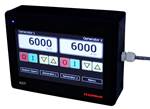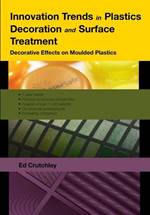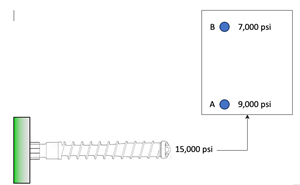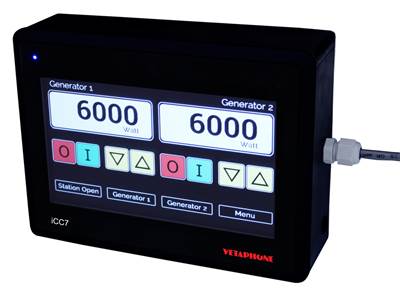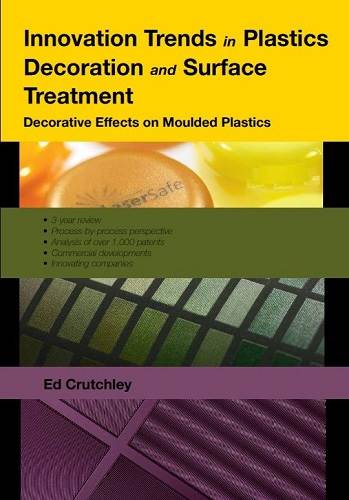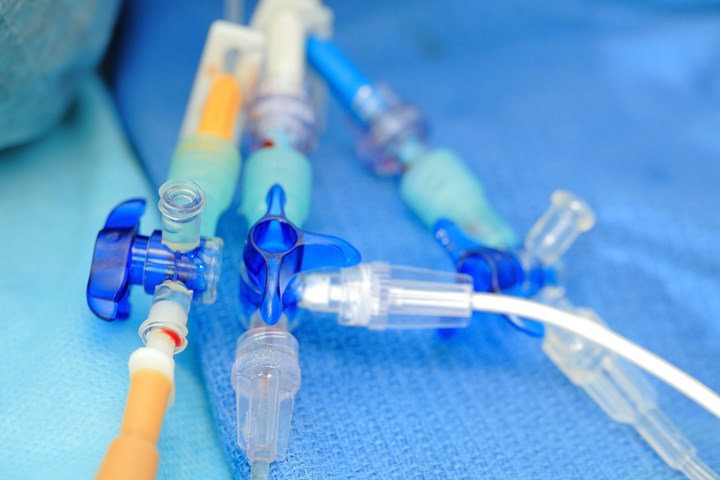
Plasma treatment transforms plastic parts into high-value products such as catheters.
Enhancing durability, printability, flow control in microfluidics, and coating adhesion can be critical to safety, quality, and efficiency of plastic products. Injection and blow molders quickly realize that utilizing plasma treatment can create competitive advantages and transform specific parts into specialized engineered components with 100-to-1000 times the value.
Plasma is a state of matter—like a solid, liquid, or gas—created by combining energy and gas, which causes ionization of the gas. Injection and blow molders, for instance, can control the collective plasma elements (ions, electrons, and reactive species) to clean, activate, chemically graft, and deposit a wide range of chemistries onto a material.
Plasma is now being used to treat everything from syringes to bumpers on trucks and automobiles. Plastic parts manufacturers are always looking for unique ways to gain a technology edge to become a market leader. In plastics, the most common plasma application is improving the bonding power of chemical adhesives; this can involve bonding metal to plastic, silicone to glass, polymers to other polymers, biological content to polymeric microtiter plates, and even bonding to fluoropolymers like PTFE.
When manufacturing parts for consumer products, automotive, military, and medical devices, plasma treatments are utilized to solve difficult challenges. Typically, this relates to plastic material applications with existing incompatibility issues. Plasma can transform the surface properties of plastic to achieve aims that normally would not be feasible without treatment. This can include cleaning surfaces, resolving difficulties applying printing inks to plastics, improving the adhesion of plastics to dissimilar materials, and applying protective coatings that repel or attract fluids. When you treat plastic with plasma, it can transform a $2 item into a $50 product.
Let’s take a look at some of the essential areas of plasma treatment, including printing on plastics, microfluidic devices, bonding plastics to dissimilar materials, treating plastic labware, coating plastics to prevent leaching, and facilitating R&D.
Plasma is now being used to treat everything from syringes to bumpers on trucks and automobiles.
Printing on Plastics
When printing on plastics, binding the ink to the surface can sometimes be challenging. This occurs when the print beads up on the surface or does not sufficiently adhere to the surface. Greater print durability may be needed, including fade resistance under high heat or repeated washings.
For many applications, plasma treatments are utilized to increase the surface energy of the material. Surface energy is defined as the sum of all intermolecular forces on a material, the degree of attraction or repulsion force a material surface exerts on another material. When a substrate has high surface energy, it tends to attract. For this reason, adhesives and other liquids often spread more easily across the surface. This “wettability” promotes superior adhesion using chemical adhesives.
For example, to resolve the beading issue, plasma treatment can make the surface hydrophilic (attracted to water). The treatment facilitates spreading out the ink on the surface, so it does not bead up.
On the other hand, substrates with low surface energy—such as silicone or PTFE—are difficult to adhere to other materials without first altering the surface to increase the free energy. Depending on what is required, organic silicones can also be used to create intermediate bonding surfaces with either polar or dispersive surface energy to help printing inks adhere to the surface of the plastic. This approach can facilitate the durable printing of a logo on the surface of bottles when the logo cannot fade after the first wash. Yet another application includes printing on plastics used for syringes, which do not bond easily with biodegradable inks that are friendly to the human body.

Plasma can transform the surface properties of plastics to achieve aims that normally would not be feasible, such as facilitating durable printing of a logo on the surface of bottles.
Microfluidic Devices
Typically, microfluidic systems used for medical or industrial applications transport, mix, separate, or otherwise process small amounts of fluids using channels made of plastics, measuring from tens to hundreds of micrometers. Microfluidic devices usually have various wells containing different chemistries, either mixed or kept separate. It is imperative to either maintain flow through the channel or prevent any residual liquid flow in the channel after the chemistry has passed through it.
With microfluidics, plasma treatment is used to disperse liquid on the surface to allow it to flow through easily. Or, it can make the surface more hydrophobic (water repellent) to prevent the fluids from clumping together in unintended areas. When the fluids are “pushed away,” this minimizes the chance of any sticking or getting left behind.
In such cases, plasma treatment of plastic surfaces can facilitate the smooth, precise flow of liquids in the narrow channels. This can be critical not only for safety in medical procedures but also for quality in industrial processes.
As with printing, adhesion promotion is achieved by increasing the surface free energy. The net effect is a dramatic improvement in bonding.
Bonding Plastics with Dissimilar Materials
In the automotive industry, there is a push to use plastics to reduce vehicles’ weight and make them safer. However, getting plastic to adhere to metal, rubber, or even other types of plastic can sometimes be exceedingly difficult. When traditional chemical adhesives fail to sufficiently bond dissimilar types of materials, or if companies are looking to reduce the amount of chemical waste produced, engineers often turn to plasma treatments to solve complex adhesion problems.
While treating the plastic alone can improve bonding, treating both materials enhances the bond by improving adhesive wicking across the surface. As with printing, adhesion promotion is achieved by increasing the surface free energy through several mechanisms. This includes precision cleaning, chemically or physically modifying the surface, increasing surface area by roughening, and using primer coatings. The net effect is a dramatic improvement in bonding. In some cases, up to a 50x increase in bond strength can be achieved.

When traditional chemical adhesives fail to sufficiently bond dissimilar materials, or if companies are looking to reduce the amount of chemical waste produced, engineers often turn to plasma treatment to solve complex adhesion problems.
Treatment of Labware
Each year, billions of multi-well plates, pipettes, bottles, flasks, vials, Eppendorf tubes, culture plates, and other polymer labware items are manufactured for research, drug discovery, and diagnostic testing. Although many are simple, inexpensive consumables, an increasing percentage are now being surface treated using gas plasma or have functional coatings specifically designed to improve the quality of research and increase the sophistication of diagnostics. Among the goals of surface modification is improved adhesion and proliferation of antibodies, proteins, cells, and tissue.
Most of the plasma applications for labware can be categorized as “simple” treatments, such as oxygen or argon plasma for cleaning the substrate at the molecular level. The use of plasma is also well established for surface conditioning to make polymers more hydrophobic or hydrophilic. Potential plasma treatment applications include coating PP or PS plates with alcohol or facilitating protein binding to the surface. Gas plasma can provide surface conditioning of in vitro diagnostic platforms before the adsorption of biological molecules (protein/antibody, cells, carbohydrates, etc.) or biomimetic polymers.
Multi-well, or microtiter, plates are a standard tool in analytical research and clinical diagnostic testing laboratories. The most common material used to manufacture microtiter plates is PS, because it is biologically inert, has excellent optical clarity, and is tough enough to withstand daily use. Most disposable cell culture dishes and plates are made of PS.
Other polymers such as PP and PC are also used for applications that must withstand a broad range of temperatures, such as polymerase chain reaction (PCR) for DNA amplification. However, untreated synthetic polymers are highly hydrophobic and provide inadequate binding sites for cells to anchor effectively to their surfaces. To improve biomolecule attachment, survivability, and proliferation, the material must be surface modified with plasma to become more hydrophilic.
If you treat PS with oxygen plasma, it will become very hydrophilic, so water spreads everywhere. This allows aqueous solutions containing biological content to spread and deliver biomolecules to the surface while providing a hydrogen bonding platform to adhere to them. Treating the surface in this manner has many benefits, including improved analyte wetting of wells; greater proliferation of cells without clumping; reduced amount of serum, urine, or reagents required for testing; and lower risk of overflow and cross-well contamination.

Plasma treatments are utilized to solve difficult challenges in producing plastic parts for medical devices.
Coating Plastics to Prevent Leaching
Using plastic labware can raise concerns about leaching of substances from within the plastic. Since plastic labware is susceptible to leaching of plasticizers, stabilizers, and polymerization residues, plasma is used to coat the inside of containers with a quartz-like barrier material. These flexible quartz-like coatings are polymerized onto the plastic by plasma-enhanced chemical vapor deposition. The resulting coating can be a very thin (100-500 nm), non-crystalline, highly conformal, and highly flexible (180º ASTM D522) coating.
Similarly, there can be concerns about potential leaching from plastics in contact with foods and beverages. To prevent plastic leaching, industry manufacturers can coat the plastic using plasma treatment. Two options are a PTFE-type coating, or on the opposite side of the spectrum, a silicone-quartz coating to create a near glass-like surface. One example is sports water bottles with a modified interior surface, typically due to plasma treatment or application of a coating.
Since labware is susceptible to leaching from plasticizers, stabilizers and polymerization residues, plasma is used to coat the inside of the containers with a quartz-like barrier material.
Facilitating R&D
When injection and blow molders are developing a new product or process that could require plasma treatment, the two options are purchasing in-house plasma equipment and developing the necessary expertise to use them, or using toll processing services.
If R&D assistance is required, plasma treatment is standard enough that leading equipment providers can modify existing, mature equipment and technology, complete with fixturing, to deliver what are essentially drop-in solutions. As is the case with PVA TePla, some providers provide access to on-site R&D equipment and engineering expertise.
For custom molders that may be doing work for manufacturers in a range of industries, purchasing a plasma treatment system is a flexible option that is not specific to one application. You can plasma treat multiple parts and have multiple recipes with a system. You can use it on multiple product lines.
However, for molders that want plasma-treated parts or components without investing in in-house equipment and training, the solution is to utilize a contract processor. With this approach, the parts are shipped, treated, and returned within a mutually agreed timeframe. For small or infrequent batches, this can significantly lower the price per part. Working with a contract processor has advantages in tapping into the years of technical expertise applying various plasma treatments, which can often speed R&D efforts.
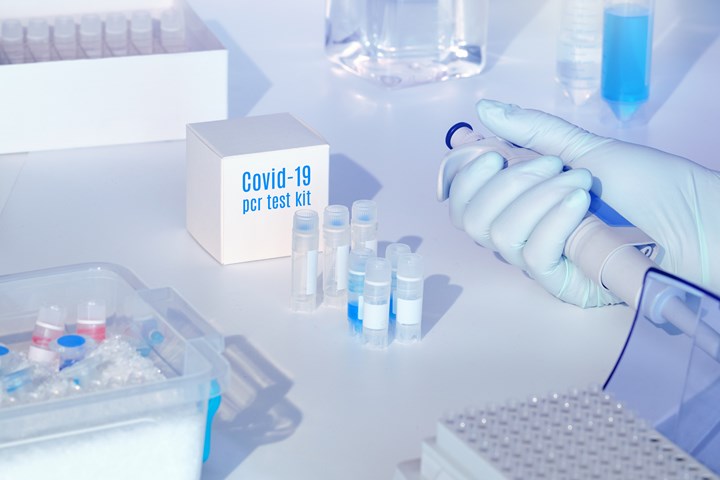
Plasma treatment can be used to solve difficult challenges in making packaging for medical test kits.
As applications and production volumes continue to evolve, collaborating with a partner with significant plasma treatment expertise can provide a quicker time to market for a customer's product.
ABOUT THE AUTHOR: Ryan Blaik is the sales manager for PVA TePla America, a system engineering company specializing in plasma systems. Blaik has a background in physics, chemistry and biology, with experience working in the medical-device industry. He worked in the Surface Modification R&D Lab, at PVA TePla in Corona Calif., and started in his current capacity in 2020. Contact: 951-371-2500; sales@pvateplaamerica.com; pvateplaameria.com.
Related Content
A Systematic Approach to Process Development
The path to a no-baby-sitting injection molding process is paved with data and can be found by following certain steps.
Read MoreUse These 7 Parameters to Unravel the Melt Temperature Mystery
Despite its integral role in a stable process and consistent parts, true melt temperature in injection molding can be an enigma. Learning more about these seven parameters may help you solve the puzzle.
Read MoreUnderstanding the Effect of Pressure Losses on Injection Molded Parts
The compressibility of plastics as a class of materials means the pressure punched into the machine control and the pressure the melt experiences at the end of fill within the mold will be very different. What does this difference mean for process consistency and part quality?
Read MoreRevisiting the '5 M's' of Molding
All injection molding ultimately comes down to the “Man, Mold, Machine, Material and Method.” But those key aspects can be viewed differently if you’re auditing mold changes before startup or troubleshooting changes for an already validated process.
Read MoreRead Next
Decorating, Printing, Finishing: Taking Corona and Plasma Surface Treatment Beyond Industry 4.0
Vetaphone now offers hardware interfaces such as Profinet on its equipment to allow centralized set-up and control.
Read MoreOptions For Plastics Decoration and Surface Treatment
New book analyzes recent trends in decoration and surface treatment of thermoplastics.
Read MorePeople 4.0 – How to Get Buy-In from Your Staff for Industry 4.0 Systems
Implementing a production monitoring system as the foundation of a ‘smart factory’ is about integrating people with new technology as much as it is about integrating machines and computers. Here are tips from a company that has gone through the process.
Read More

